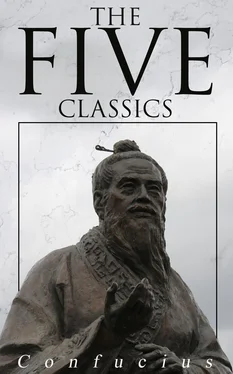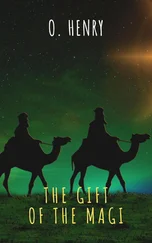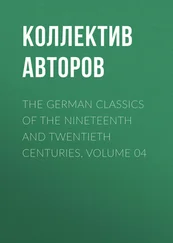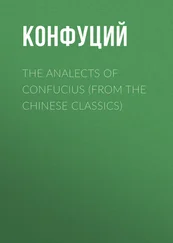
But substituting numbers for the number of marks, we have
This is nothing but the arithmetical puzzle, in which the numbers from 1 to 9 are arranged so as to make 15 in whatever way we add them 9. If we had the original form of 'the River Map,' we should probably find it a numerical trifle, not more difficult, not more supernatural, than this magic square.
3. Let us return to the Yî of K âu, which, as I have said above on p. 10, contains, under each of the 64 hexagrams, a brief essay of a moral, social, or political character, symbolically expressed.
To understand it, it will be necessary to keep in mind the circumstances in which king Wăn addressed himself to the study of the lineal figures. The kingdom, under the sovereigns of the Yin or Shang dynasty, was utterly disorganised and demoralised. A brother of the reigning king thus described its condition:--
'The house of Yin can no longer exercise rule over the land. The great deeds of our founder were displayed in a former age, but through mad addiction to drink we have destroyed the effects of his virtue. The people, small and great, are given to highway robberies, villainies, and treachery. The nobles and officers imitate one another in violating the laws. There is no certainty that criminals will be apprehended. The lesser people rise up and commit violent outrages on one another. The dynasty of Yin is sinking in ruin; its condition is like that of one crossing a large stream, who can find neither ford nor bank 10.'
This miserable state of the nation was due very much to the character and tyranny of the monarch. When the son of Wăn took the field against him, he thus denounced him in 'a Solemn Declaration' addressed to all the states:--
'Shâu, the king of Shang, treats all virtue with contemptuous slight, and abandons himself to wild idleness and irreverence. He has cut himself off from Heaven, and brought enmity between himself and the people. He cut through the leg-bones of those who were wading in a (winter-)morning he cut out the heart of the good man 11. His power has been shown in killing and murdering. His honours and confidence are given to the villainous and bad. He has driven from him his instructors and guardians. He has thrown to the winds the statutes and penal laws. He neglects the sacrifices to Heaven and Earth. He has discontinued the offerings in the ancestral temple. He makes (cruel) contrivances of wonderful device and extraordinary ingenuity to please his wife 12--.God will no longer bear with him, but with a curse is sending down his ruin 13.'
Such was the condition of the nation, such the character of the sovereign. Meanwhile in the west of the kingdom, in a part of what is now the province of Shen-hsî, lay the principality of K âu, the lords of which had long been distinguished for their ability, and virtue. Its present chief, now known to us as king Wăn, was Kh ang, who had succeeded to his father in B. C. 1185. He was not only lord of Kâu, but had come to be a sort of viceroy over a great part of the kingdom. Equally distinguished in peace and war, a model of all that was good and attractive, he conducted himself with remarkable wisdom and self-restraint. Princes and people would have rejoiced to follow him to attack the tyrant, but he shrank from exposing himself to the charge of being disloyal. At last the jealous suspicion of Shâu was aroused. Wăn, as has been already stated, was thrown into prison in B. C. 1143, and the order for his death might arrive at any moment. Then it was that he occupied himself with the lineal figures.
The use of those figures--of the trigrams at least--had long been practised for the purposes of divination. The employment of the divining stalks is indicated in 'the Counsels of the Great Yü,' one of the earliest Books of the Shû 14, and a whole section in 'the Great Plan,' also a Book of the Shû, and referred to the times of the Hsiâ dynasty, describes how 'doubts were to be examined' by means of the tortoise-shell and the stalks 15. Wăn could not but be familiar with divination as an institution of his country 16. Possibly it occurred to him that nothing was more likely to lull the suspicions of his dangerous enemy than the study of the figures; and if his keepers took notice of what he was doing, they would smile at his lines, and the sentences which he appended to them.
I like to think of the lord of K âu, when incarcerated in Yû-lî, with the 64 figures arranged before him. Each hexagram assumed a mystic meaning, and glowed with a deep significance. He made it tell him of the qualities of various objects of nature, or of the principles of human society, or of the condition, actual and possible, of the kingdom. He named the figures, each by a term descriptive of the idea with which he had connected it in his mind, and then he proceeded to set that idea forth, now with a note of exhortation, now with a note of warning. It was an attempt to restrict the follies of divination within the bounds of reason. The last but one of the Appendixes bears the name of 'Sequence of the Diagrams.' I shall have to speak of it more at length in the next chapter. I only remark at present that it deals, feebly indeed, with the names of the hexagrams in harmony with what I have said about them, and tries to account for the order in which they follow one another. It does all this, not critically as if it needed to be established, but in the way of expository statement, relating that about which there was no doubt in the mind of the author.
But all the work of prince Kh ang or king Wăn in the Yî thus amounts to no more than 64 short paragraphs. We do not know what led his son Tan to enter into his work and complete it as he did. Tan was a patriot, a hero, a legislator, and a philosopher. Perhaps he took the lineal figures in hand as a tribute of filial duty. What had been done for the whole hexagram he would do for each line, and make it clear that all the six lines 'bent one way their precious influence,' and blended their rays in the globe of light which his father had made each figure give forth. But his method strikes us as singular. Each line seemed to become living, and suggested some phenomenon in nature or some case of human experience, from which the wisdom or folly, the luckiness or unluckiness, indicated by it could be inferred. It cannot be said that the duke carried out his plan in a way likely to interest any one but a hsien shăng who is a votary of divination, and admires the style of its oracles. According to our notions, a framer of emblems should be a good deal of a poet, but those of the Yî only make us think of a dryasdust. Out of more than 350, the greater number are only grotesque. We do not recover from the feeling of disappointment till we remember that both father and son had to write 'according to the trick,' after the manner of diviners, as if this lineal augury had been their profession.
4. At length I come to illustrate what I have said on the subject-matter of the Yî by an example. It shall be the treatment of the seventh hexagram  which king Wăn named Sze, meaning Hosts. The character is also explained as meaning 'multitudes;' and in fact, in a feudal kingdom, the multitudes of the people were all liable to become its army, when occasion required, and the 'host' and the 'population' might be interchangeable terms. As Froude expresses it in the introductory chapter to his History of England, 'Every man was regimented somewhere.'
which king Wăn named Sze, meaning Hosts. The character is also explained as meaning 'multitudes;' and in fact, in a feudal kingdom, the multitudes of the people were all liable to become its army, when occasion required, and the 'host' and the 'population' might be interchangeable terms. As Froude expresses it in the introductory chapter to his History of England, 'Every man was regimented somewhere.'
Читать дальше


 which king Wăn named Sze, meaning Hosts. The character is also explained as meaning 'multitudes;' and in fact, in a feudal kingdom, the multitudes of the people were all liable to become its army, when occasion required, and the 'host' and the 'population' might be interchangeable terms. As Froude expresses it in the introductory chapter to his History of England, 'Every man was regimented somewhere.'
which king Wăn named Sze, meaning Hosts. The character is also explained as meaning 'multitudes;' and in fact, in a feudal kingdom, the multitudes of the people were all liable to become its army, when occasion required, and the 'host' and the 'population' might be interchangeable terms. As Froude expresses it in the introductory chapter to his History of England, 'Every man was regimented somewhere.'










